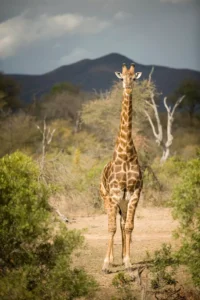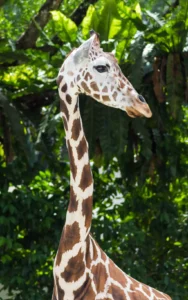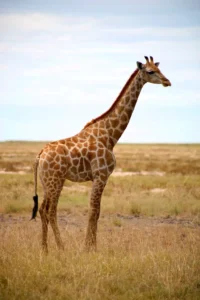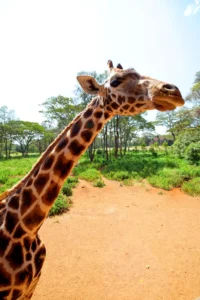Giraffes, the world's tallest mammals, have intrigued humans for centuries with their long necks and elegant stature. These majestic creatures roam the African continent, gracing the landscapes with their unique patterns and gentle demeanor. But where exactly can you find these gentle giants in the wild?
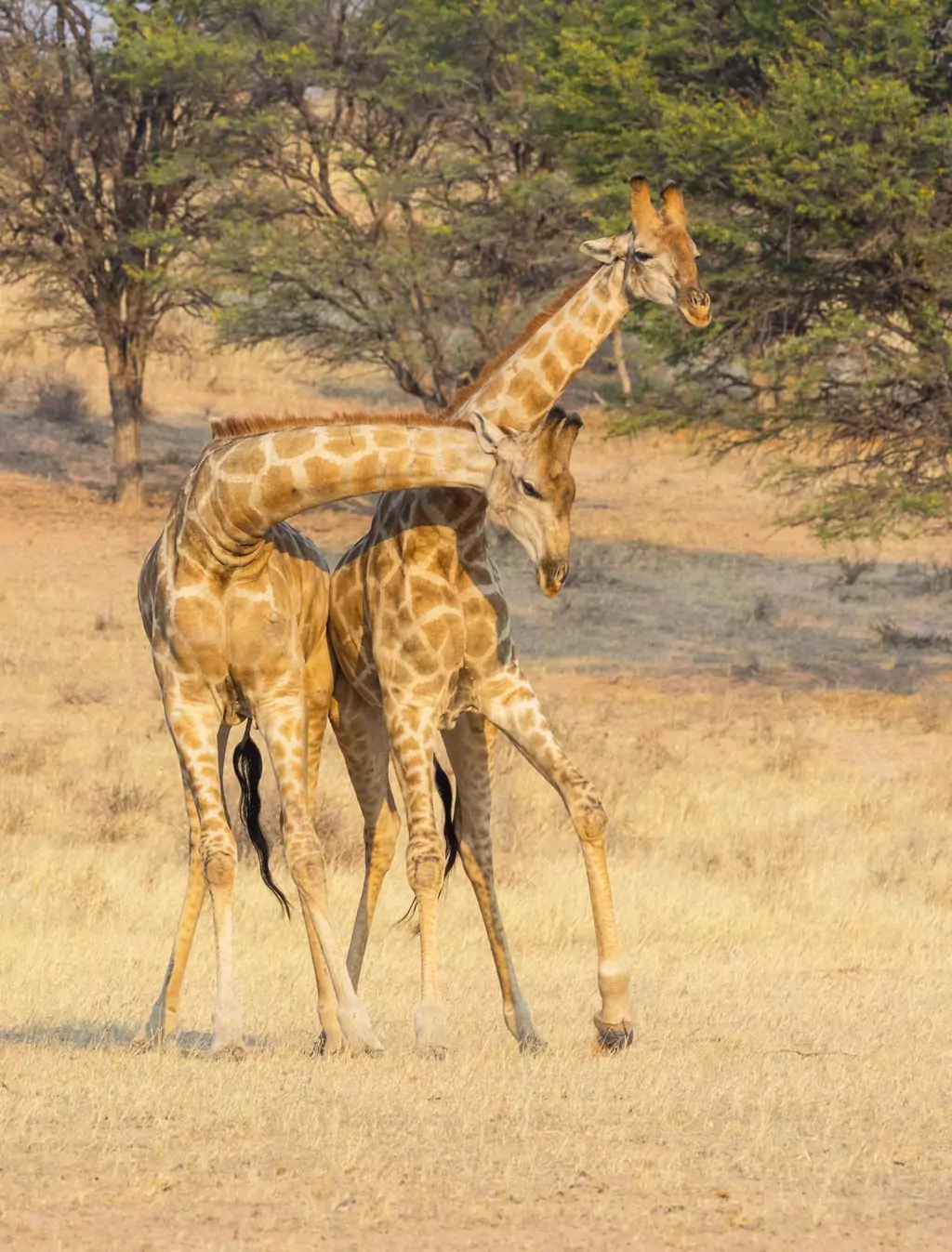
Key Takeaways:
- Habitat: Giraffes predominantly inhabit grasslands, savannas, and open woodlands.
- Distribution: They are commonly found in East Africa, particularly in reserves like Tanzania’s Serengeti National Park and Kenya’s Amboseli National Park.
- Diet: Their diet mainly consists of leaves, particularly from the thorny acacia tree.
- Social Behavior: Giraffes live in nonterritorial groups and have excellent eyesight which they use for vigilance against predators.
- Conservation Status: As of 2016, the giraffe's conservation status was reclassified as vulnerable by the IUCN.
Habitat and Distribution
Giraffes are native to the African continent. They predominantly inhabit grasslands, savannas, and open woodlands. Their height, which can reach up to 5.5 meters for males, gives them an advantage in accessing food sources that other animals can't reach. With their prehensile tongues, they can browse foliage almost six meters from the ground.
Giraffes are a common sight in East Africa. Reserves such as Tanzania’s Serengeti National Park and Kenya’s Amboseli National Park are some of the best places to observe these animals in their natural habitat.
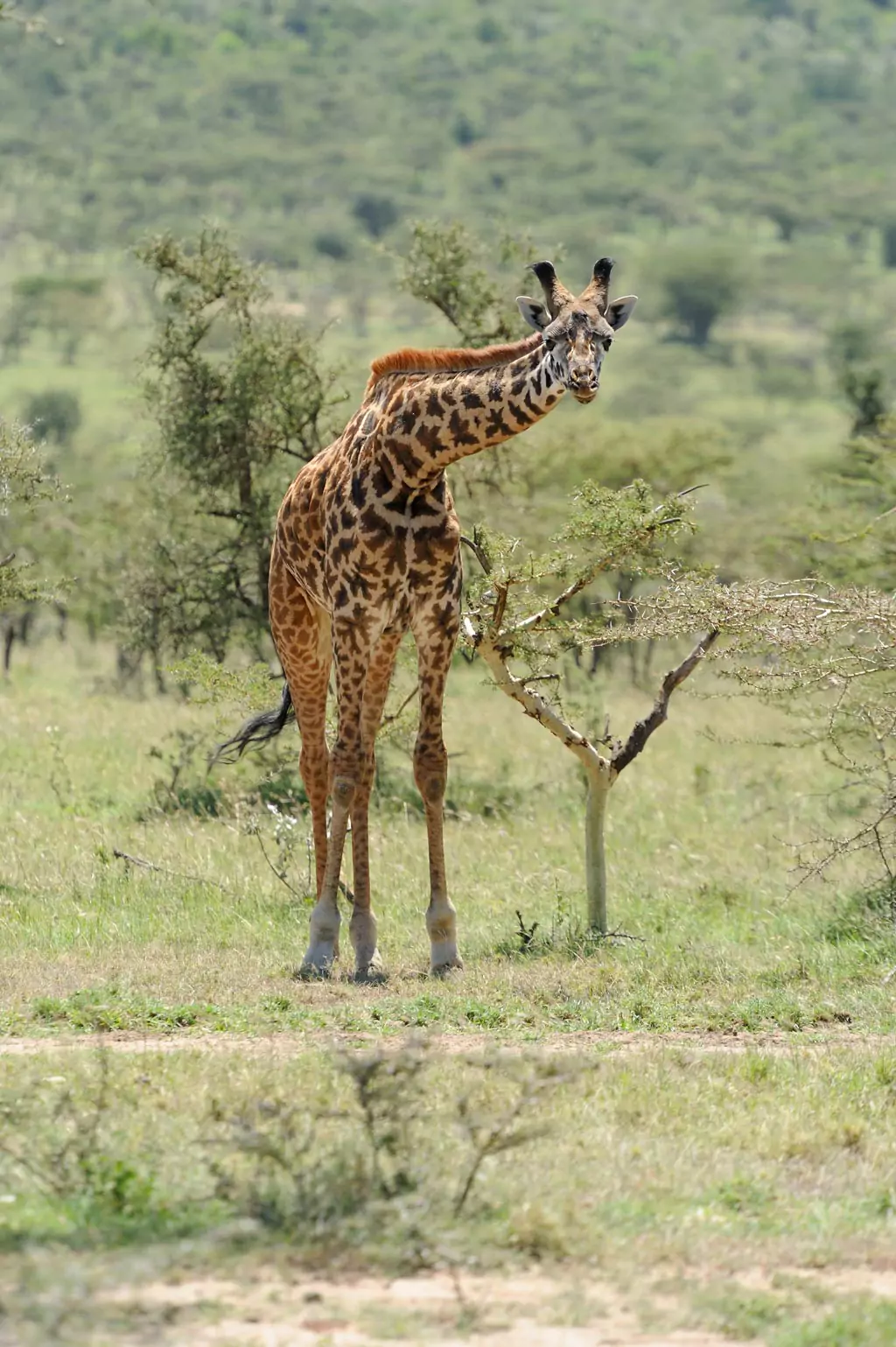
Watch this video to learn more about giraffes: https://www.youtube.com/watch?v=bNYXweQ81vI
Dietary Habits
Giraffes are herbivores with a preference for new shoots and leaves, especially from the thorny acacia tree. They have a unique way of feeding; their long tongues, which can be almost half a meter in length, allow them to grasp leaves and pull them into their mouths. If the foliage isn't thorny, they use their teeth to "comb" the leaves from the stem.
A large male giraffe can consume about 65 kg of food per day. While they get most of their water from their food, during the dry season, they drink water at least every three days. When they need to drink water directly from a source, they have to spread their forelegs apart to reach the ground with their heads.
For a closer look at their dietary habits, check out this video: https://youtube.com/watch?v=P_ckAbOr0r4
Social Behavior and Lifespan
Giraffes are social animals, often found in nonterritorial groups of up to 20. These groups allow for increased vigilance against predators. With their excellent eyesight, when one giraffe notices a potential threat, others quickly follow its gaze to be aware of the danger.
In the wild, giraffes can live up to 26 years, and they can live slightly longer in captivity. Their social behaviors and interactions are fascinating to observe. For instance, when a mother giraffe gives birth, she spends a week in isolation with her calf, allowing them to learn each other's scent. After this period, the calf joins a "nursery group" of similar-aged young giraffes.
To see these majestic creatures in action, watch this video: https://youtube.com/watch?v=9Qx6vw93GBE
Conservation Status
Giraffes have faced various threats over the years. In the 19th and 20th centuries, factors like overhunting, habitat destruction, and diseases reduced their population significantly. As of 2016, the International Union for Conservation of Nature (IUCN) reclassified the conservation status of giraffes from "least concern" to "vulnerable". This change was due to a 36-40% decline in their population between 1985 and 2015.
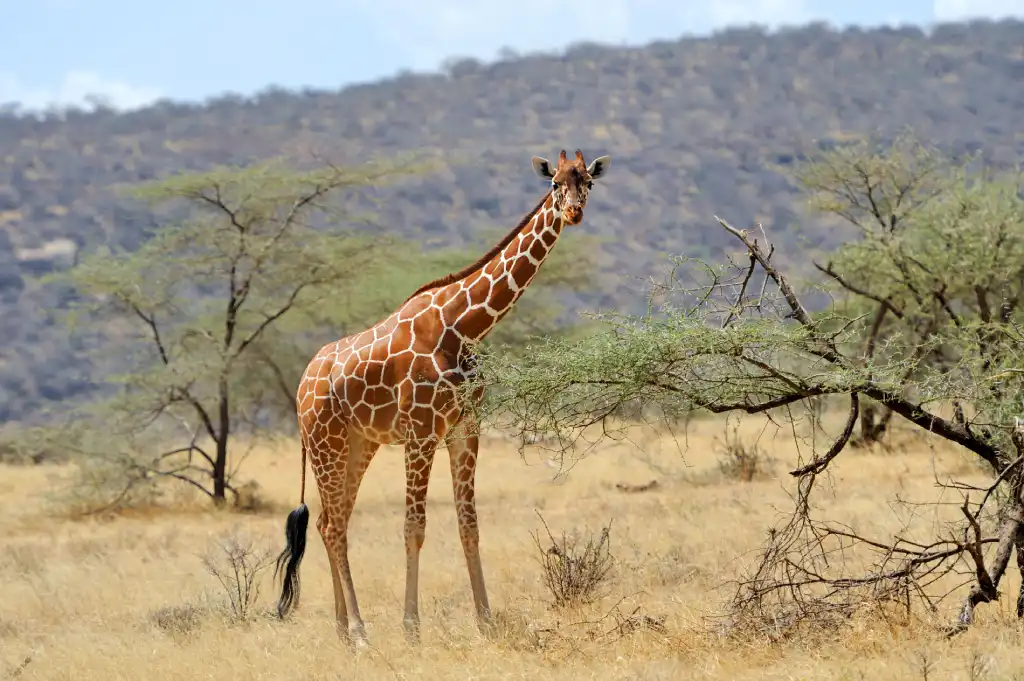
Today, efforts are being made to conserve and protect these gentle giants. Many reserves and national parks in Africa are dedicated to ensuring that giraffes can thrive in their natural habitats.
For more detailed information on giraffes and their conservation, visit Encyclopedia Britannica's page on giraffes.
The Intriguing World of Giraffes: Species, Genetics, and Conservation
Diverse Species of Giraffes
Contrary to popular belief, there isn't just one species of giraffe. Recent scientific findings have revealed that there are four distinct species of giraffes:
- Southern Giraffe
- Masai Giraffe
- Reticulated Giraffe
- Northern Giraffe
These species are as genetically distinct from each other as brown bears are from polar bears. This discovery has significant implications for conservation, as some of these species are critically endangered with only a few thousand individuals remaining in the wild. For a deeper understanding of these species, check out this detailed article on The Verge.
Genetic Discoveries
Until recently, it was believed that all giraffes belonged to a single species with various subspecies. However, a comprehensive genetic analysis on all nine previously recognized subspecies revealed that there are four genetically distinct species. This groundbreaking study was the first of its kind to delve deep into the genetics of giraffes, shedding light on the rich biodiversity within this iconic species.
Conservation Efforts
The giraffe population has seen a decline of 40% in the last 15 years, with only about 80,000 giraffes remaining in Africa. Despite this alarming statistic, giraffes were still listed as "least concern" on the IUCN Red List. However, with the new findings about the distinct species, there's a push to reclassify their conservation status. For instance, the northern giraffe has less than 4,750 individuals left in the wild, and the reticulated giraffe has fewer than 8,700 individuals.
Conservationists are now advocating for each of these species to have their own individual conservation status on the IUCN Red List. For more information on conservation efforts and the challenges faced by giraffes, visit the Giraffe Conservation Foundation.
Distinct Characteristics
Each of the four giraffe species has unique characteristics that set them apart:
- The Masai giraffe is darker with patches separated by irregular, light brown lines extending to their legs.
- The reticulated giraffe boasts brown-orange patches separated by thick, bright white lines.
Researchers are now keen on understanding whether these species have different behaviors, mating systems, and adaptations to various climates. This information will be crucial in tailoring conservation efforts to each species' specific needs.
For more insights into the unique characteristics of these species, check out this article on African Wildlife Foundation.

